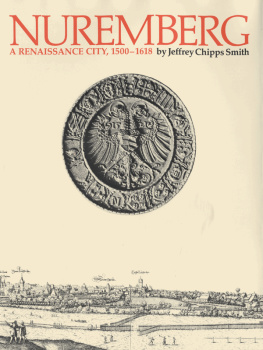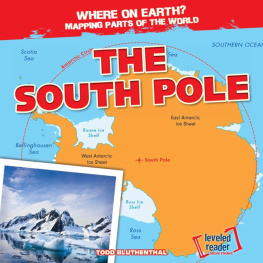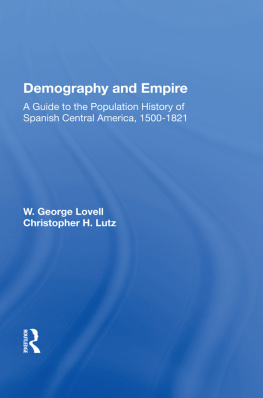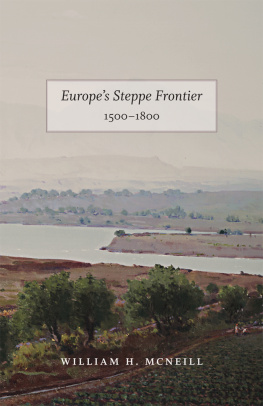Published by Louisiana State University Press
Copyright 2014 by Louisiana State University Press
All rights reserved
Manufactured in the United States of America
First printing
Designer: Barbara Neely Bourgoyne
Typeface: Ingeborg
Printer and binder: Maple Press
Library of Congress Cataloging-in-Publication Data are available at the Library of Congress.
ISBN 978-0-8071-5710-7 (cloth: alk. paper) ISBN 978-0-8071-5711-4 (pdf) ISBN 978-0-8071-5712-1 (epub) ISBN 978-0-8071-5713-8 (mobi)
The paper in this book meets the guidelines for permanence and durability
of the Committee on Production Guidelines for Book Longevity of the Council on Library Resources.

ACKNOWLEDGMENTS
I would like to thank the many people who helped memainly by agreeing to play tennis, racquetball, and guitar with me, in addition to the eating, drinking, and smoking that usually followedduring the writing of this book. They include Charles Bittner, Neilesh Bose, Marianne Bueno, Patricia Burton, Mike Campbell, Kent Calder, Gregg Cantrell, Erica Charters, Guy Chet, Don Chipman, Sam Haynes, Rick McCaslin, Jill Montgomery, Chris Morris, Aaron Navarro, Lisa Siraganian, Jennifer Wallach, and The Mike Wise Experience. Of course, most of my thanks and love go to Sophie Burton, who, along with Allie, Sammie, Luna, Blue, and the late Toby and Wileynot to mention all the fish, frogs, salamanders, and newtsmade it all worthwhile.
Louisiana and the Gulf South Frontier, 15001821
Introduction
For the past two decades or so, scholars have put forth a number of highly acclaimed studies of the people of Native American, European, and African descent who coexisted in the Lower Mississippi Valley and surrounding regions between the sixteenth and early nineteenth centuries. When considered together, these works have conclusively established that the Gulf South area, stretching northward from the Gulf of Mexico to the Tennessee and Arkansas Rivers, and westward from the Suwannee River to the Trinity River, constitutes a distinctive historical region that should be studied as a whole, regardless of international boundaries. The Gulf South is characterized by extremely well-watered, fertile soil that, with a sufficient labor force, is one of the most productive agricultural areas in the world. Native Americans originally settled in the Gulf South and developed the most complex culture in North America prior to the arrival of Europeans and Africans in the sixteenth century. Basing their economic development on the production of food crops, various powerful indigenous states emerged in which a small population of hereditary elites resided in an exalted status far above the more numerous commoners. Ultimately, people of European ancestry came to supplant the Indians and, through the use of forced African slave labor, raised commercial crops alongside foodstuffs to establish the wealthiest region in the United States by the early nineteenth century.
Although similar scenarios emerged in eastern North Americaan area much more familiar to students of early U.S. historyduring the same era, for various reasons, the Gulf South stands out as a region distinct from the four zonesNew England, Middle Colonies, Chesapeake, and Low Countrythat made up British North America. First, the Indians of the Gulf South were wealthier and more powerful than any other indigenous groups in North America. Although they suffered intense population decline following the invasion from the Eastern Hemisphere, tribes such as the Apalaches, Creeks, Choctaws, Chickasaws, Caddos, Quapaws, Osages, and Wichitas adapteddue, in part, to an influx of mixed-bloodsto their changing circumstances and remained powerful, independent entities well into the nineteenth century. Although there were exceptions, most notably the Iroquois and the Cherokees, the Native Americans located near the Atlantic Coast were overwhelmed and quickly succumbed to the numbers of Europeans and Africans (and their diseases) that began to arrive in the early seventeenth century. As a result, the far more numerous Europeans in British North America established hegemony over the dwindling number of Indians much quicker than their brethren in the Gulf South.
Second, whereas English-speaking (Anglo) Protestants made up an overwhelmingly large proportion of the European settlers in the thirteen British colonies located along the Atlantic Coast, the Gulf Souths Europeans were much more heterogeneous. Although Catholics from France and Spain had originally established the colonies of Texas, Louisiana, and Florida, a variety of people of European ancestry, including Germans, Acadians, Canary Islanders, and Anglos, resided in the Gulf South by the end of the eighteenth century. In addition to ethnic, linguistic, and religious differences, the absolute monarchs of France and Spain ruled over their subjects with little interference from below throughout the era, while the Anglos on the eastern seaboard obtained representative government at an early date. The Gulf South colonies, unlike their stable Atlantic Coast counterparts, experienced disruptive political transfers as Spain, France, and Great Britain exchanged the various provinces at one time or another before the United States finally obtained exclusive possession of the entire region (except for Texas) in 1821. Also, in contrast to the prized British colonies on the East Coast, European officials always considered Texas, Louisiana, and Florida to be backwaters, far down the listif not at the very bottomof their Western Hemisphere possessions.
Finally, the nature of African slavery that developed in the Gulf South differedalbeit in subtle waysfrom bondage in British North America. Almost from the start, slaves made up a majority of the population of French Louisiana; only South Carolina had a black majority among the thirteen colonies. Most of the slaves initially came from the same region in Africa and, concentrated together on large plantations, were able to form a culture unique to Louisiana. Also, French and Spanish laws recognized the slaves as Crown subjects and granted them legal rights, as well as membership in the Catholic Church, unlike the situation in the English provinces, where slaves were considered more straightforwardly as property. The right of self-purchase, along with fewer cultural prohibitions on interracial sex, spurred the formation of a large caste of free people of color in the Gulf South toward the end of the eighteenth century. While the creation of the three-caste system in Louisiana was part of a similar development in other French and Spanish holdings in the Western Hemisphere during the period, it stood in direct contrast to the strict biracial polarity that existed in British North America at the same time.


 and the
and the 









